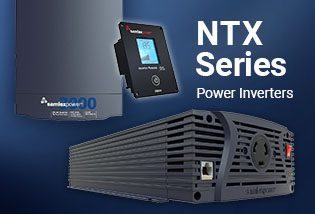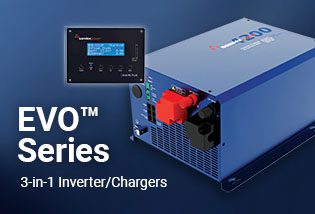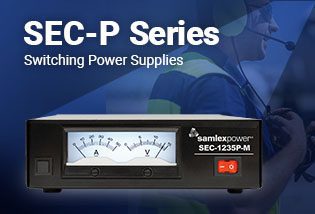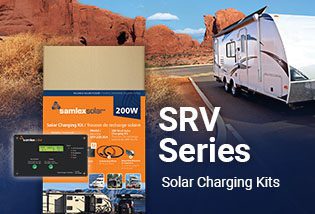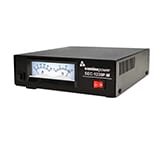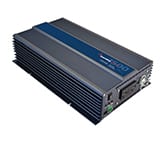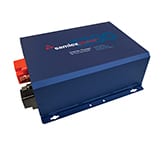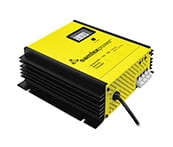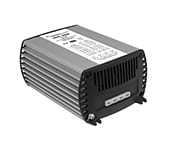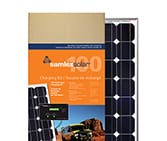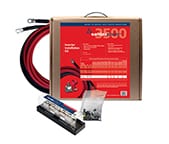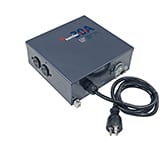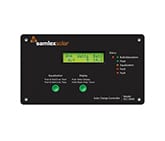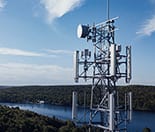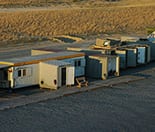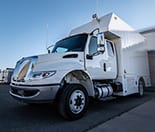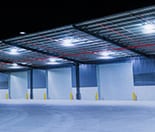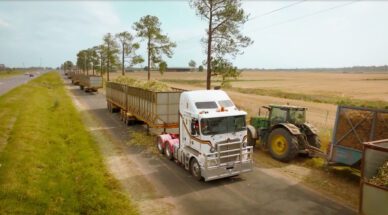When designing an off-grid power system, one of the most important decisions you’ll make is choosing the right voltage: 12V or 24V. While 12V systems have historically dominated smaller installations, 24V systems are quickly becoming the go-to for serious off-grid users looking for power reliability–wherever the grid doesn’t reach.
Whether you’re powering a full-time remote cabin, a mission-critical telecom station, or an agricultural setup, the advantages of 24V are clear. In this guide, we’ll explore why 24V power inverters deliver greater efficiency, lower wiring costs, and long-term reliability.
What does a power inverter do?
In an off-grid system, your energy comes from DC power sources like solar panels, batteries, or generators. A power inverter converts stored DC energy into AC electricity—the same type of power used by most appliances, electronics, and field equipment.
Common off-grid applications powered by inverters:
- Remote cabins with refrigerators, lighting, and entertainment
- Field research stations running sensitive scientific equipment
- Agricultural setups with water pumps, fencing, or climate control
- Remote telecom repeaters and monitoring systems
But choosing the right voltage for your inverter—12V vs 24V—can significantly impact your system’s performance and costs.
Why 12V inverters fall short in larger setups
12V inverters are a familiar choice for small-scale systems. They’re suitable for:
- Weekend-use tiny homes
- Systems with total loads under 2,000W
- Short cable runs (inverter close to the battery bank)
However, they come with limitations:
- Higher current draw means you need thick, expensive cables
- Voltage drop over long distances reduces system efficiency
- Limited scalability if your power needs grow
If your system is compact and usage is light, 12V may still suffice. But if you’re powering heavier loads or appliances with extended run-time, 24V is the better choice.
The clear advantages of 24V power inverter systems
Upgrading to a 24V inverter system unlocks several key benefits:
✔️ Greater efficiency
A 24V inverter pulls half the current of a 12V system to deliver the same power. That means less energy loss and cooler, more efficient operation.
✔️ Lower wiring costs
Because current is lower, cable thickness can be reduced—cutting your wiring expenses by up to 50%.
✔️ Better for larger loads
Need to run full-size appliances, power tools, communication systems, or scientific instruments? 24V handles high loads with less strain on the wiring and connections, resulting in improved overall efficiency.
✔️ Scalable and future-ready
Planning to expand your system later? 24V makes it easier to grow without a total overhaul. That being said, you’ll want to plan ahead for future growth to avoid costly mistakes. Review your current and future needs and make sure your inverter and battery bank can handle the peak surge and run-time requirements.
24V power inverters ideal for:
- Off-grid homes with full size appliances
- Agricultural systems with continuous-duty water pumps
- Scientific or communications equipment in the field
- Long-distance wiring runs from battery banks to inverter
Featured Samlex 24V power inverters
For off-grid reliability, Samlex America offers the industrial-grade PST Series in 24V options:
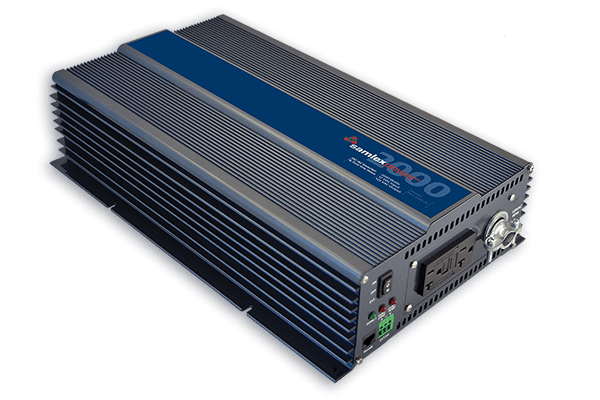 PST-2000-24
PST-2000-24
2000W Pure Sine Wave Inverter
Ideal for off-grid cabins and mid-sized installations
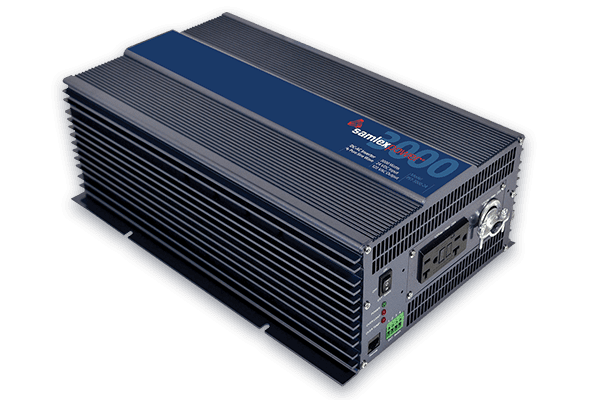
PST-3000-24
3000W Pure Sine Wave Inverter
Designed for heavy-duty use, continuous operation and emergency backup
Both PST power inverters feature:
- Pure sine wave output for sensitive electronics
- Rugged build for harsh environments
- Proven durability for off-grid and mobile use
- 3-year warranty and global support network
Real-world value: why 24V makes sense long-term
While 12V systems may still serve small, portable, or minimal-load setups, the majority of today’s off-grid applications benefit from stepping up to 24V for long-term value. From lower installation costs to a more efficient better system design, the advantages add up fast.
If you want peace of mind for your off-grid lifestyle or critical infrastructure, a 24V system is simply the smarter choice.
Need help choosing the right inverter for your off-grid build? Talk to a Samlex expert today to find your 24V power solution.
FAQs
Here are some frequently asked questions regarding 24V power inverter systems.
Can I use a 12V inverter on a 24V battery system?
No. The inverter voltage must match the battery voltage, or it may fail or get damaged.
What if I already have a 12V system—can I upgrade to 24V?
Yes, but it involves replacing the inverter, batteries, and rewiring the electrical system. We recommend consulting with an off-grid professional specialist for safe conversion.
How do I determine the right inverter size for my off-grid system?
Add up the wattage of all devices you plan to power simultaneously and choose an inverter that exceeds that total by at least 20%. Try our run-time inverter calculator to help you estimate your off-grid needs.


